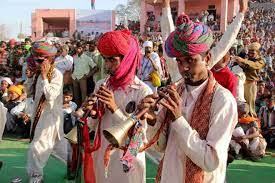- Private car and driver in Delhi / India
- +91-8447445445
- info@discoverindiabycar.com sugar.ankit@yahoo.com
 +91-9818434712
+91-9818434712
Dungarpur
The area of present-day Dungarpur is thought to have been ruled by Dungaria, a powerful Bhil tribal chief, during the reign of Maharawal Veer Singh Dev, the sixth descendant of Sawant Singh of Mewar.
Climate
The maximum temperature is 25 °C, while the minimum is 9 °C (min). In Dungarpur, the yearly rainfall ranges from 47 cm to 76 cm.
Location
India’s Rajasthan state’s southernmost city is called Dungarpur. The Dungarpur District’s administrative centre is located there. Along with Aspur tehsil, it is the town in southern Rajasthan that is growing the quickest.
History of Dungarpur
Dungaria wished to marry Sala Shah, the daughter of a wealthy Mahajan. Sala Shah set a distant date for the wedding while plotting with Veer Singh to assassinate the entire wedding party, including Dungaria, while they were inebriated. Following the assassination, Rawal Veer Singh seized control of the entire region an established the town of Dungarpur.
The name Dungarpur was given to the new town because Rawal Veer Singh promised the two widows of Dungaria that the new town would be named after Dungaria. He also erected a monument in honour of Dungaria. He also stated that in the future, when the new ruler takes over, a descendant of Dungaria would place the ‘Tilak’ on the ruler’s forehead from blood drawn from his finger.Dungarpur is known for its distinct architectural style, which can be seen in its palaces and noble residences. These royal residences are adorned with ‘jharokhas’ made of stone in a distinctive style unique to the region, developed during the reign of Maharawal Shiv Singh (1730-1785 A.D.) The gold and silversmiths in the district are well-known for their lacquer painted toys and picture framing.
How to Travel Dungarpur?
You can travel Bikaner by private car and driver from Delhi. Discover India By car provide best tour packages for Bikaner. One the the custom tour package for Bikaner by private car and driver is Royal Rajasthan Package by best care rental service with driver in India.
Principal Attractions
The city of Dungarpur has seen many empires rise and fall. Dungarpur was ruled by Tribal chiefs, Rajput kings, Mongol invaders, Mughals, and even Marathas. The architecture of the city demonstrates the town’s exposure to a wide range of cultures. Because of these differences, the city’s historical monuments are worth seeing because each one is truly unique to visitors. Baneshwar Fair, Dungarpur Museum, Gaib Sagar Lake, Juna Mahal, Udai Bilas Palace, and Urs-Galiyakot are among the major attractions in Dungarpur.
Baroda
It was once the capital of Vagad and is known for the old Shiv Temple made of white stone and an ancient Jain temple with images of all 24 tirthankaras carved on a black wall.
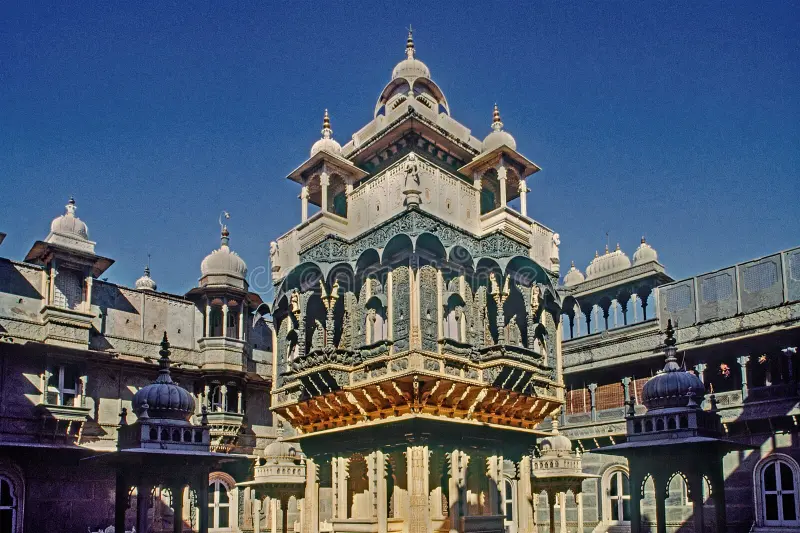

Somnath Deo
Deo Somnath is an ancient Lord Shiv temple made of white stone that was built in the 12th century. The temple is of exceptional architecture and represents ancient art.
Galiyakot
Galiyakot, a small village in the Dungarpur district, has special significance for the Ismaili Shia Muslims who gather there for ziyarat at Sayyed Fakhruddin’s memorial.
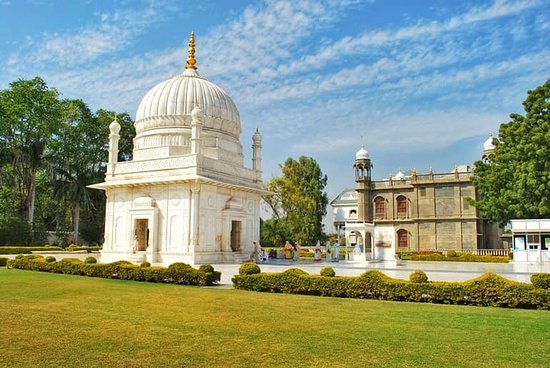
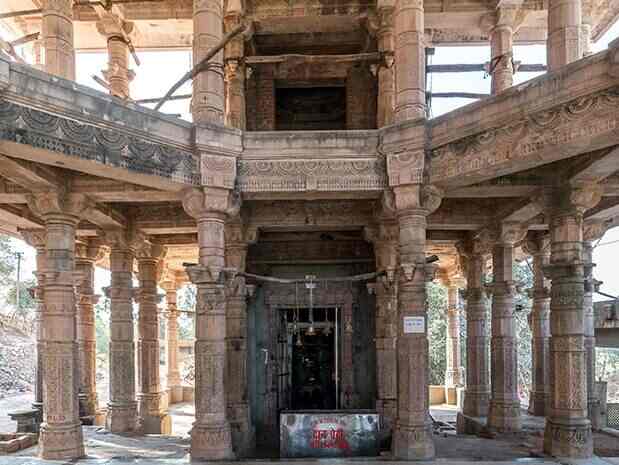
Temple of Bhuvaneshwar
Every year, five days after Holi, a colourful fair is held at the Lord Shiv temple located here. The fair’s main attraction is the Bhil tribe’s Gair dance.
Palace of Udai Bilas
This palace was built as a residence for the royal family and is named after MahrawalUdai Singh II. The building features superb Rajput architecture, including sculpted pillars and panels, balconies, and spectacular arches.
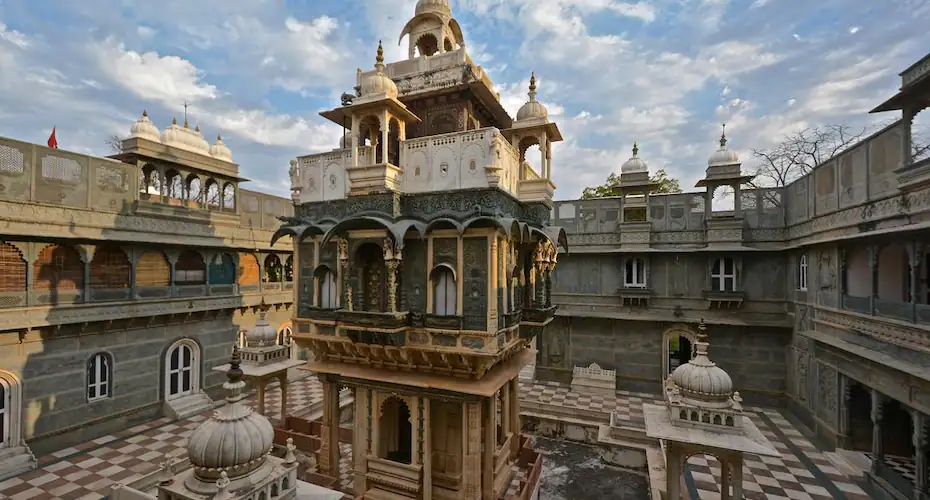

Poonjpur
Poonjpur is a temple dedicated to Mavji, the incarnation of Lord Krishna, and it houses the manuscript of three books known as the Chopra. Chopra was written by Mavji himself. The temple also has an image of Nishkalank riding a horse.
Temple of Baneshwar
This temple is situated at the confluence of the rivers Som and Mahi. There are three Shivlings in this temple. The Vishnu temple is nearby and is thought to be built on the site where Mavji, an incarnation of Lord Krishna, meditated. A temple dedicated to Lord Brahma is also nearby, and it serves as the site of an annual fair.
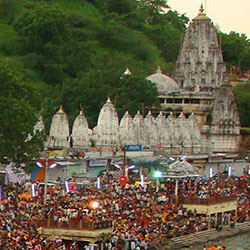
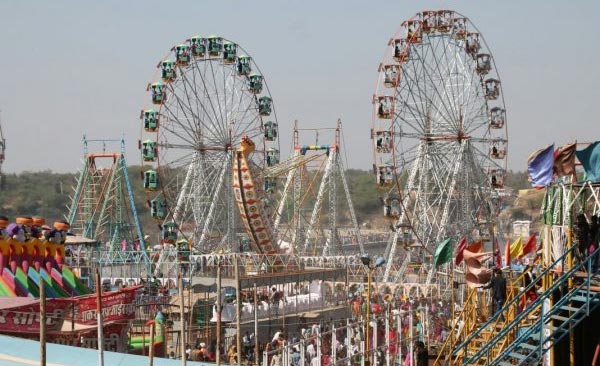
Fair of Baneshwar
The name Baneshwar, which means delta, was derived from the revered Shivlinga kept in the Mahadev temple in Dungarpur. Every year, this fair is held near the confluence of the rivers Som and Mahi, which is built like a citadel with stonewalls, towers, narrow entrances and hallways to slow the enemy’s advance. Beautiful frescoes, miniature paintings, glass and mirror work adorn the magnificent interiors. This structure is unquestionably worth seeing during your visit to Dungarpur.
Dungarpur Fairs and Festivals
On the full moon day of February, thousands of Bhil tribe devotees gather at the confluence of the rivers Mahi and Som to take a holy dip. It is a time for people to worship, sing, and dance. Magic shows and acrobatic displays add to the excitement of the Baneshwar fair.Another important Dungarpur celebration is the Bar Bij Fair, which is held every year a month after Diwali. Tribals hold a fair on the fifth day after Holi, where they perform dances and display their traditional artillery.
